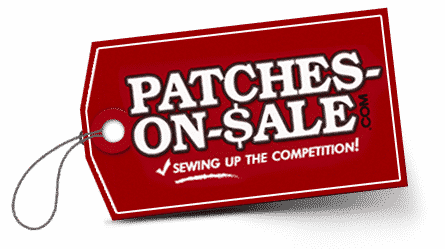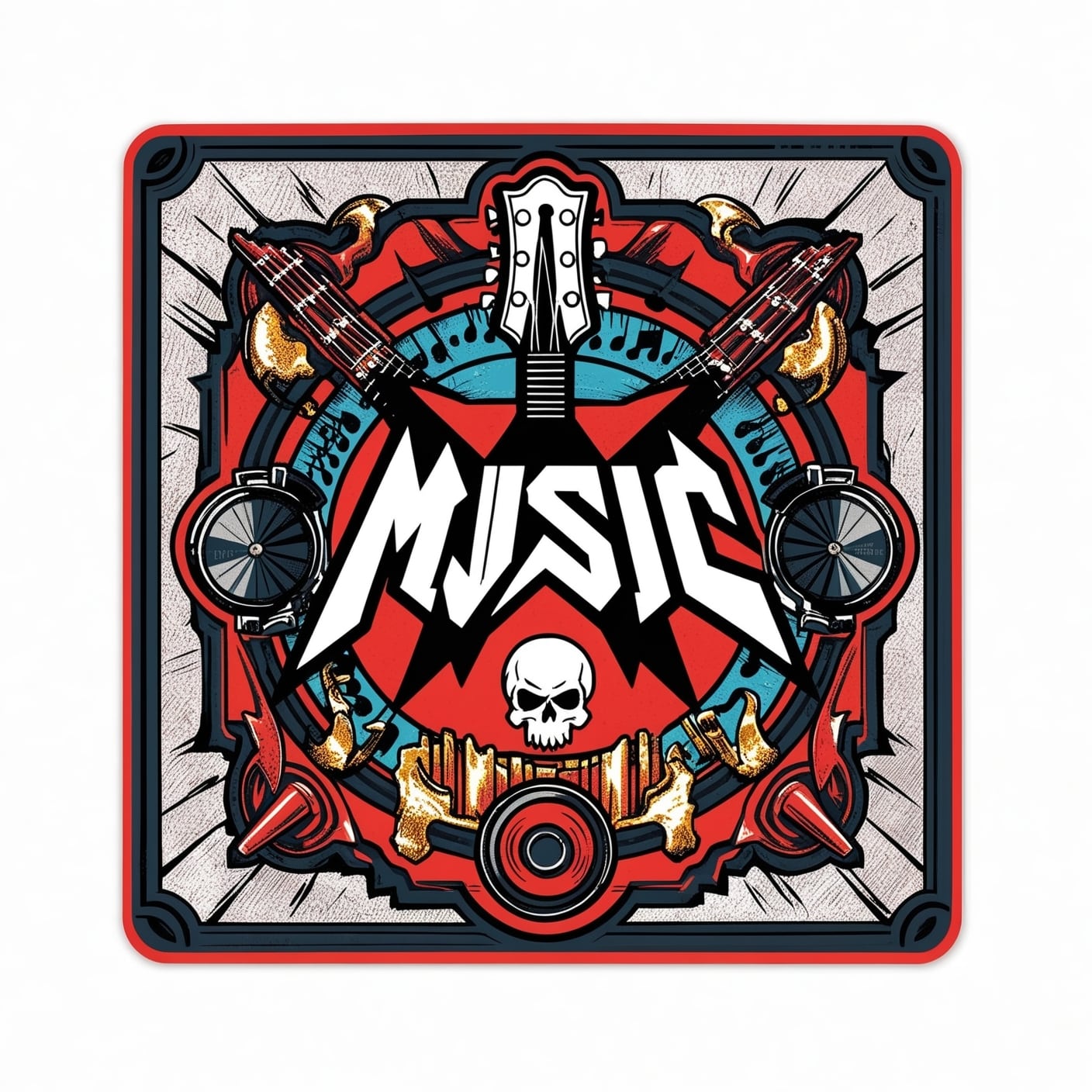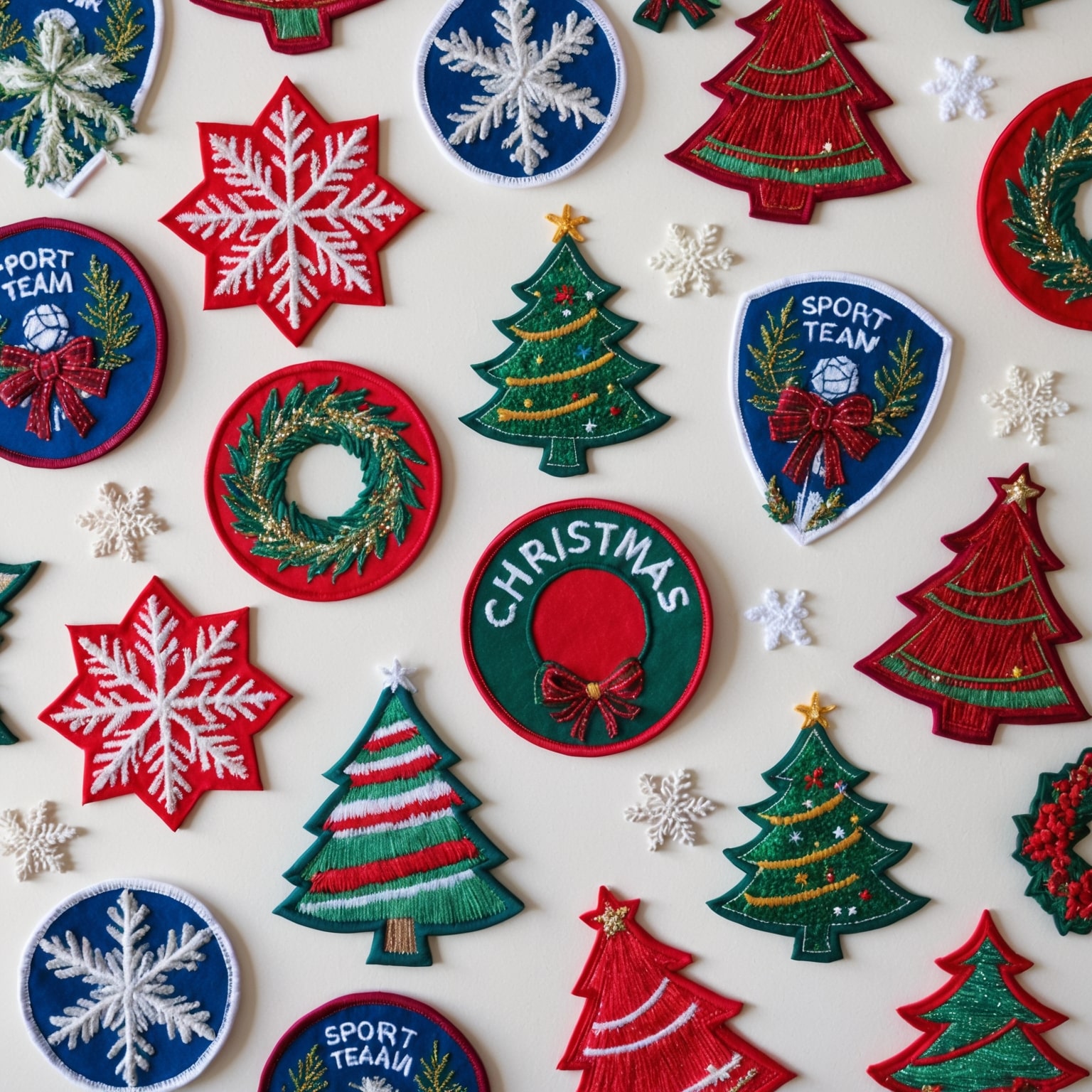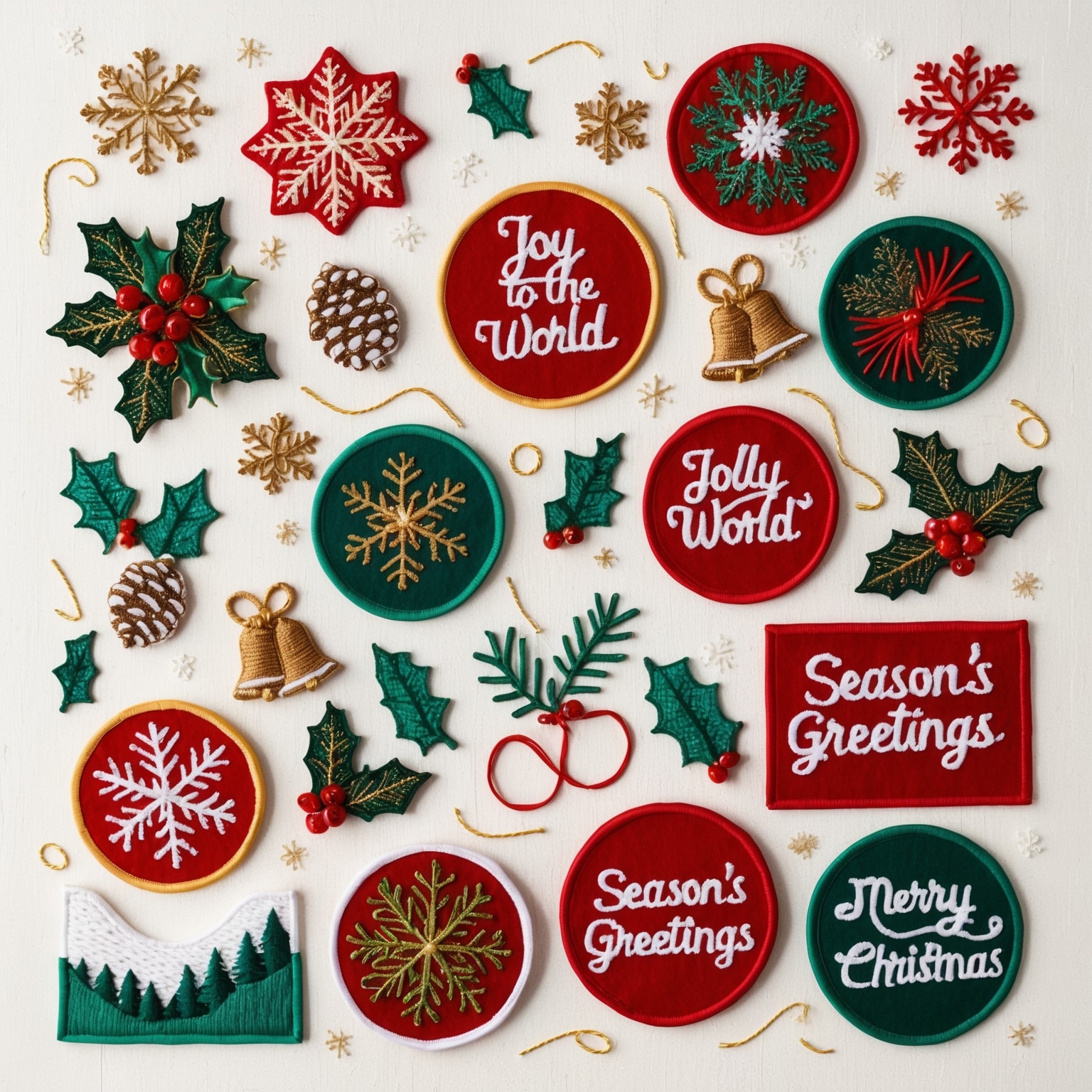When it comes to music, the power of image and identity is undeniable. From the Beatles’ iconic “Apple” logo to the Rolling Stones’ famous “Tongue and Lips” symbol, a band’s image is often as significant as its music. As music culture has evolved, one of the most enduring ways bands have visually connected with fans is through custom patches. These wearable pieces of art not only serve as badges of loyalty for fans but also play a crucial role in defining a band’s identity.
Custom patches have long been a staple in the world of rock, punk, metal, and indie music. Whether sewn onto jackets, backpacks, or hats, these patches symbolize belonging to a community of fans and create a lasting visual legacy for bands. For emerging and established music groups alike, designing memorable custom patches is a powerful way to build a visual identity, strengthen fan engagement, and leave a lasting impression on audiences.
In this article, we’ll explore the steps involved in designing iconic custom patches for music bands. From the initial concept and design elements to choosing materials and colors, we will dive into what it takes to create patches that resonate with fans and capture the essence of a band’s style and message. Whether you’re a seasoned band manager or a new musician looking to establish your brand, this guide will help you create custom patches that stand the test of time.
1. The Cultural Impact of Custom Patches in Music
Before diving into the design process, it’s important to understand the cultural significance of custom patches in the music industry. Music and fashion have always been deeply interconnected, with musicians setting trends and defining styles for their fans. Custom patches are one of the most direct ways for fans to show their dedication to a band, while also expressing their own sense of style and identity.
1.1. The Rise of Custom Patches in Music Subcultures
The origins of custom patches in music can be traced back to the rebellious subcultures of the 1960s and 1970s. In particular, punk rock and heavy metal scenes embraced patches as a symbol of counterculture. Bands like The Sex Pistols, The Ramones, and Black Sabbath used bold, provocative imagery on their patches, helping to create a visual identity that resonated with fans who wanted to rebel against mainstream fashion and culture.
These patches became part of a broader DIY (do-it-yourself) ethos, where fans would sew them onto their clothing, often alongside studs, spikes, and other customized elements. The process of personalizing one’s clothing with custom patches became a statement of individuality and a way to visually align oneself with a particular music scene.
1.2. From Punk to Pop: Patches Across Genres
While custom patches are often associated with punk, metal, and rock, they have since transcended these genres to become a popular form of merchandise for a wide range of musical acts. From indie bands to hip-hop collectives, custom patches are now used by artists of all genres to connect with their fans.
Today, patches are not just limited to hardcore music fans—they have become collectible items that music lovers of all stripes wear with pride. Bands that create unique and stylish custom patches stand out in the crowded music marketplace, offering fans a way to visibly support their favorite artists while also expressing their personal style.
2. Defining Your Band’s Identity Through Custom Patches
The first step in creating memorable custom patches is to define your band’s visual identity. Just as your music has a distinct sound, your patch should reflect your band’s personality, message, and style. The design of your custom patches should be an extension of your brand, something that immediately resonates with fans and encapsulates what your music represents.
2.1. Identifying Core Themes and Symbols
Every band has its own unique story, message, or set of themes that define its music. Before diving into the design process, it’s essential to identify the core themes or symbols that represent your band. These could be recurring motifs in your lyrics, visual elements that align with your genre, or iconic symbols that fans already associate with your band.
- Example: A psychedelic rock band might incorporate swirling patterns, flowers, or celestial imagery to reflect themes of spirituality and exploration in their music, while a punk band might choose symbols like safety pins, skulls, or anarchy signs to convey rebellion.
2.2. Aligning the Patch with Your Music Genre
While creativity is key, it’s also important to consider how your patch design aligns with your band’s genre. Different music genres often have distinct visual languages that fans expect. Rock and metal bands tend to favor darker, edgier designs, while indie or folk bands may opt for more whimsical, nature-inspired elements.
- Example: A metal band might create custom patches featuring sharp angles, gothic fonts, and darker color schemes, while an indie folk band could opt for hand-drawn illustrations of nature scenes or instruments to convey a softer, more organic feel.
- Pro Tip: Consider your audience when designing your custom patches. What kind of imagery resonates with your fans? Do they lean toward bold, aggressive designs, or do they appreciate something more minimalist and understated?
2.3. Creating a Strong Visual Identity
Your custom patches should not only look good but also reinforce your band’s identity in a way that is instantly recognizable. This includes consistent use of your logo, band name, and any other visual cues that are already associated with your brand. Consistency across all your promotional materials, including patches, helps strengthen your band’s identity and ensures that fans recognize your imagery at a glance.
- Example: A band with a recognizable logo or icon, such as The Rolling Stones’ famous lips and tongue, can use this image as the centerpiece of their custom patches. This reinforces brand identity and makes the patch an instant must-have for fans.
3. Key Elements of an Effective Custom Patch Design
Designing custom patches involves balancing creativity with practicality. While your patch should be visually striking, it also needs to work well within the constraints of patch manufacturing. Here are the key elements to consider when designing your band’s patches.
3.1. Shape and Size of the Patch
The first decision you’ll need to make is the shape and size of your custom patch. Traditional patches are typically circular or rectangular, but there’s no limit to the shapes you can create. You might opt for a unique, custom shape that reflects your band’s identity, such as the shape of an instrument, symbol, or object associated with your music.
- Example: A band known for its desert-themed music might create custom patches in the shape of a cactus or desert horizon, while a band with space-inspired lyrics might design patches shaped like planets or rockets.
In terms of size, smaller patches are more versatile and can be placed on various items like jackets, backpacks, or hats. Larger patches tend to make a bolder statement but may limit where fans can use them.
- Pro Tip: Consider creating multiple patch sizes for different uses. For example, a small circular patch for hats or sleeves and a larger rectangular patch for the back of a jacket.
3.2. Choosing Colors That Pop
Colors play a huge role in how your custom patches will be perceived. The right color palette can make your design stand out, while the wrong choice of colors can result in a patch that’s difficult to read or doesn’t grab attention. Consider the following tips when selecting colors:
- Contrast: High contrast between the background and foreground elements will make your design more legible from a distance.
- Genre Influence: Colors can also convey the tone and genre of your band. Darker colors like black, deep reds, or metallics tend to work well for metal and rock bands, while lighter pastels or earth tones are more commonly associated with folk or indie music.
- Material Considerations: Remember that embroidered patches may not produce the exact same color vibrancy as screen-printed designs, so choose your palette accordingly.
- Example: A metal band might use black and silver to create a dark, edgy look, while a pop band could go for vibrant neon colors to create a fun and energetic design.
3.3. Typography and Fonts
The text on your custom patch is an essential part of the design. Whether it’s your band’s name, a slogan, or the title of your latest album, the typography you choose should be clear, bold, and reflective of your band’s style. Consider fonts that align with the tone of your music—edgy, clean, retro, or ornate.
- Example: A hardcore punk band might opt for bold, distressed fonts that look rough and rebellious, while an electronic band could use sleek, futuristic typefaces to match their high-energy sound.
- Pro Tip: Keep text minimal and avoid overloading the patch with too much information. The simpler and cleaner the design, the more impactful it will be.
3.4. Symbols, Icons, and Imagery
The imagery on your custom patch should be instantly recognizable and aligned with your band’s overall aesthetic. Whether you use your logo or other custom symbols, the goal is to create something that fans will want to wear and show off.
- Example: The Grateful Dead’s iconic skull and roses imagery is a great example of a band creating a timeless symbol that transcends just being a logo. Their patches are immediately recognizable and appeal to both die-hard fans and casual listeners alike.
- Pro Tip: Avoid overly complex designs that could lose detail during the embroidery or printing process. Simple, bold symbols often work best on patches, especially when scaled down.
4. Practical Considerations for Manufacturing Custom Patches
Once your design is finalized, the next step is bringing it to life through manufacturing. Here are the key factors to consider when producing your band’s custom patches.
4.1. Embroidered vs. Printed Patches
The two most common types of custom patches are embroidered and printed. Each method has its own advantages and can create different effects depending on your design.
- Embroidered Patches: These patches have a raised, textured surface where the design is stitched onto the fabric. Embroidered patches are durable, have a classic look, and are often used for rock or metal bands that want a rugged, traditional feel.
- Printed Patches: These patches allow for more intricate, detailed designs to be printed directly onto the fabric. Printed patches are ideal for designs that use a lot of fine detail, gradients, or photographic imagery.
- Pro Tip: Consider the aesthetic of your band when choosing between embroidered and printed patches. Embroidered patches often feel more tactile and traditional, while printed patches can offer more vibrant colors and detailed designs.
4.2. Material Choices
The type of material you choose for your custom patches can also affect their look and feel. Common materials include twill, felt, and cotton blends. For an edgier look, consider using leather or denim patches, which can align well with rock, punk, or metal band aesthetics.
- Example: A country or folk band might opt for natural cotton or burlap patches to convey a rustic, organic vibe, while a rock band might choose leather patches to create a more rugged, rebellious look.
4.3. Backing Options
Another important consideration is the type of backing you’ll use for your patches. The backing determines how the patch will be attached to clothing or other items.
- Iron-On Backing: This is a popular option for ease of use, allowing fans to simply iron the patch onto their clothing.
- Sew-On Backing: Sew-on patches provide a more permanent attachment and are great for fans who want to customize their denim jackets, vests, or bags.
- Velcro Backing: For bands that perform at festivals or outdoor events, Velcro backing can be a fun way to allow fans to easily swap out or change patches on their gear.
5. Marketing and Distributing Your Band’s Custom Patches
Once your custom patches are designed and manufactured, it’s time to get them into the hands of your fans. Here are some effective ways to market and distribute your patches to maximize engagement and sales.
5.1. Merchandise at Gigs
Selling custom patches at live shows is a classic way to engage with fans and boost merchandise sales. Not only do fans love walking away with something tangible from the event, but patches are also affordable items that can generate significant revenue for your band.
- Pro Tip: Create limited-edition patches for specific tour dates or album releases to add exclusivity and drive demand.
5.2. Bundling with Other Merch
Another great way to promote your custom patches is to bundle them with other merchandise, such as T-shirts, albums, or posters. Bundling can increase the perceived value of your merchandise while giving fans more reasons to support your band.
- Example: You could offer a “fan pack” that includes a T-shirt, patch, and digital download of your latest album at a discounted price compared to purchasing each item individually.
5.3. Online Store Sales
In addition to selling patches at gigs, having an online store is essential for reaching fans who may not be able to attend live shows. Create a section on your website dedicated to merchandise, where fans can easily purchase custom patches along with other items. Be sure to promote your online store through social media and your band’s mailing list.
- Pro Tip: Use social media to showcase fan photos of your patches in action—on jackets, hats, bags, or even framed as part of a collection. This can inspire other fans to get their own patches and share their photos online.
Designing Iconic Custom Patches for Your Band’s Legacy
In the world of music, custom patches are more than just merchandise—they are powerful symbols of identity, belonging, and loyalty. Whether you’re an up-and-coming indie band or an established rock group, designing memorable custom patches can elevate your brand, strengthen fan engagement, and leave a lasting visual legacy for your music.
By carefully considering your band’s identity, themes, and genre, you can create custom patches that resonate with your audience and encapsulate the spirit of your music. From the design elements to the manufacturing process, every detail of your patch should reflect your band’s style, ensuring that it becomes a cherished item for fans.
Moreover, custom patches help build an emotional connection between the band and its followers. Fans take pride in displaying their loyalty, and these patches serve as wearable badges of honor that unite communities and create lasting memories. As your fans proudly wear your patch on their jackets or bags, they become walking ambassadors for your music, spreading your message far and wide.
As you distribute your custom patches at gigs, through online stores, or in merchandise bundles, you’ll build a stronger connection with your fanbase and provide them with a tangible way to show their support. And, just like the timeless patches of legendary bands, your design could one day become a symbol of your band’s legacy, worn proudly by fans around the world.
Remember, custom patches are not just about selling merchandise—they’re about telling a story, creating memories, and building a community around your music. When done right, your band’s patch will become a lasting, iconic symbol that speaks volumes about your sound, style, and the values you stand for. If you are interested in purchasing high-quality custom patches, feel free to call us at 1-877-503-8485 or fill out one of our FREE quotes here.




